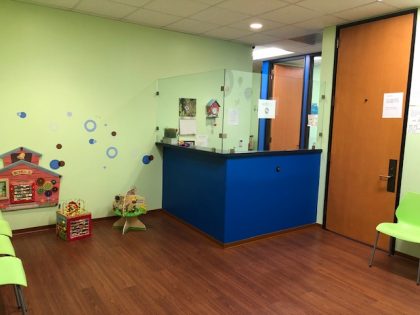- (310) 234 0300
- Email Us
- 10780 Santa Monica Blvd #405, Los Angeles, CA 90025
- Mon - Thu: 8:00am - 6:00pm
LA Intensive Pediatric Therapy offers speech, occupational and physical therapy services to pediatric clients only. We also offer Center-Based Infant Developmental Program.
Our services are provided in individual therapy rooms with specially chosen real green plants, colors, and decorations to stimulate your child’s sensory system. All LAIPT equipment is carefully selected to ensure safe and enjoyable treatment session for children.

Speech, Occupational, or Physical Therapy evaluation will take about one hour to complete. It will consist of a parent’s interview, clinical observation, and standardized testing.
Depending on the child’s diagnosis, we might use one of the following standardized tests:
After a waiting period of 7-10 days, parents will receive a comprehensive Physical/Occupational/Speech therapy report followed by a 10-minute telephone conversation during which parents will have a chance to ask any questions concerning their child’s test results.
The consultation usually takes about 30 minutes to complete. The therapist will interview parents to find out any major concerns about their child’s development in the gross motor, fine motor or communication areas. Next, the therapist will perform a clinical observation. This will take place in a form of “play”. Depending on the type of consultation (physical, occupational or speech) a therapist will be checking the client’s balance, muscle strength, coordination, endurance, play skills, expressive or receptive communication skills, fine motor skills, feeding skills, and observe if the child has any difficulties in the sensory-processing area.
At the end of the consultation, the therapist will inform the parent(s) if therapy services would be beneficial and what frequency of services would be ideal. Please note that this type of service does not include a written report, but the parent(s) could request a report for an additional fee.
LAIPT treatment session length is 60 clinical minutes. Direct therapist/patient time will be defined by the patient’s funding source and could vary from 40 to 47 minutes. At the end of the session, the patient’s parent/caregiver will be provided with feedback about their child’s performance/progress for 5 minutes and will be offered activities to practice until the next visit. The remaining time will be used for documentation.
Please note that LAIPT does not allow siblings in the treatment area for the safety of our patients. NO EXCEPTIONS.
Grow Strong Together is a multidisciplinary center-based program for children ages eighteen to thirty-six months. The program, led by our speech, physical and occupational therapists is designed to facilitate and foster progress in the areas of communication, socialization, motor skills, adaptive skills, and cognition. Our specialized classrooms are specially designed to prepare each of our clients for future social, developmental, and academic success. Each day, children participate in a schedule of tailored play-based activities designed to target specific goals in each area of need. A typical day includes social play, circle time, obstacle courses, climbing gym, art, sensory exploration, academic time and snack time.